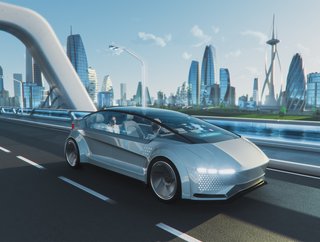What does a self-driven mobility network look like?

A revolution is underway in the transportation industry. While it may still seem as though it's years away from fruition, the rate at which e-mobility and technology evolve these days is to be watched as self-driving automobiles enter the ecosystem.
Of course, this is happening in various different forms and not everybody will need to jump ship at the first sight of technological change, but it’s expected that some form of technology will assist drivers in some way, shape or form. That could either be a result of advanced driver assistance application, or simply the use of ride-hailing services without the need for a driver.
As technology advances, the concept of smart cities is becoming a reality and transforming the urban landscape. Self-driving cars will soon be integrated into this new reality, linking services incorporated under the smart-city umbrella.
Goodbye congestion and hello seamless transportation
One of the main benefits that self-driving cars bring to the world is the potential for connected traffic management systems, acting on overwatch across cities. With the ability to communicate with traffic infrastructure, as well as each other,in real-time, autonomous vehicles (AVs) can optimise traffic flow and reduce congestion. AI-powered algorithms analyse a vast amount of data, including patterns of traffic, weather conditions and reports, and provide real-time visibility to inform traffic decision-making much faster.
“Connectivity and data are vital elements to influence the evolution of e-mobility. First of all, it helps us understand urban mobility infrastructure better,” says Carlo Ratti, Professor of Practice of Urban Technologies and Planning at MIT.
“Furthermore, data can be leveraged to forge an overarching mobility system in which e-mobility plays a central role. In this scenario — we call it the ‘Moving Web’ — a digital platform aggregates data about all mobility solutions — buses, trains and other vehicles — and broadcasts it in real time through a mobile app. Commuters can use it to identify the optimal commuting options and reserve all the trips in one go.”
While many would presume that self-driving cars are directly responsible for their reactions on the roads, signals and data from surrounding infrastructure provide more data points on which to base their decisions. Combining insights from the world around them while assessing scenarios internally means that cars will be much better informed than their drivers or passengers.
That’s not to discredit the work of autonomous vehicle creators, as they are incredibly powerful vehicles. With the ability to assess millions of data points accessed via camera, radar and lidar solutions, AVs consistently look to find the most energy-efficient routes based on the road they see in front of them. In fact, if autonomy were available for ICE vehicles, dare we say there might have been a significant impact on the amount of carbon emissions in the atmosphere today.
According to some studies, autonomous vehicles have the potential to improve fuel efficiency by up to 20%, which is a result of smoother operation and optimal speeds for the journey. From an EV perspective, AV technologies help drivers make their most of their energy and inform them when it really is time to charge.
Enabling shared mobility and sustainable urban planning
Looking at the EV landscape with a broader lens means city planners will consider electrified and autonomous vehicles in their endeavours. With the introduction of shared mobility, regulations and demand are likely to shift towards more publicly available means of transport, which will reshape the way people navigate cities.
Understanding the routes that AVs take and how they interact with their environments could drive strategies and plans for charging locations, thus optimising the routes for autonomous taxis and the energy consumption of such services.
“Self-driving cars can promote car- and ride-sharing, hence changing urban mobility,” says Ratti. “Also, they can have a major effect on urban infrastructure.
“Sensor-laden self-driving vehicles, which can communicate with one another to maintain safe distances, will need less assistance at road crossings. As a result, slot-based intersections, modelled after air traffic control systems, could replace traffic lights.
“On approaching an intersection, a vehicle would be assigned an individualised time, or ‘slot’, to pass through the intersection – increasing throughput and making better use of the urban infrastructure.”
This shift also aligns with developing infrastructure for cyclists as smart cities also incorporate docked cycling and scooter arrangements to provide consumers with simple, nimble transport options.
“We can already imagine a not-too-distant future of self-driving cars where your vehicle can give you a lift to work, and then, instead of sitting parked until you return home, give a lift to someone else in your family, or anyone else in the city,” Ratti explains.
“The combination of the two above phenomena – car-sharing and ride-sharing – could drastically reduce the total number of cars in a given city.”






